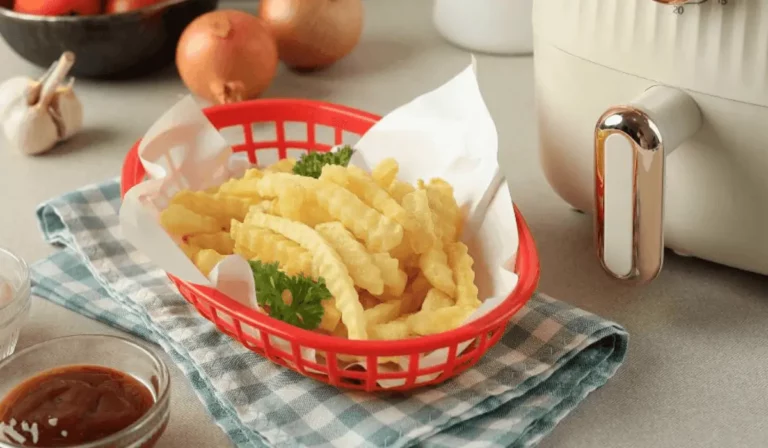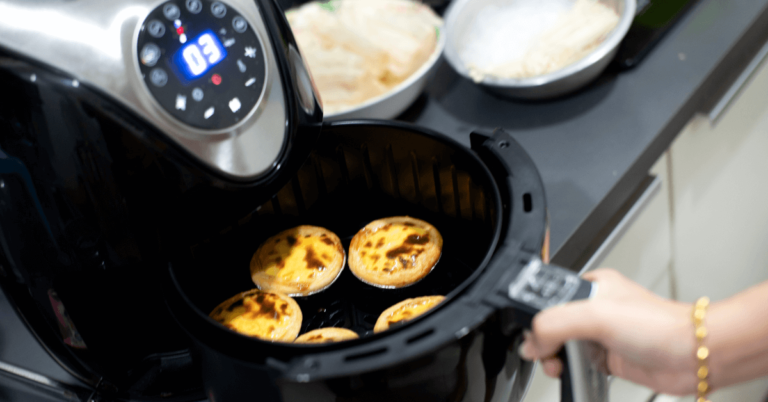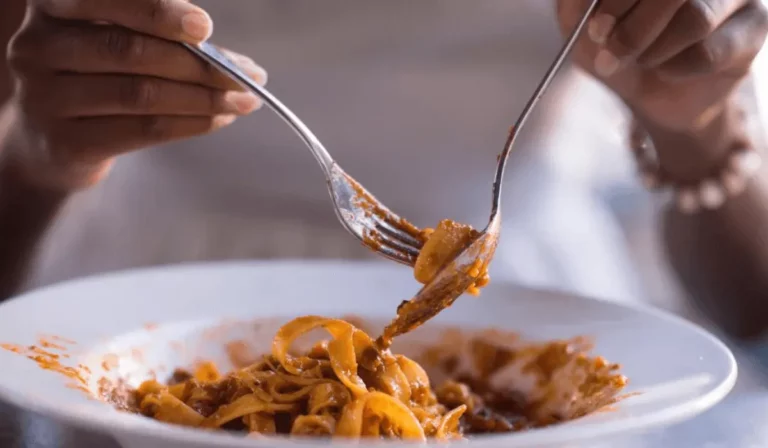Introduction to How to Boil Carrots:
Boiling carrots, a seemingly simple kitchen task, is an art that can transform this humble root vegetable into a culinary delight. But, how long to boil carrots? The answer isn’t as straightforward as you might think. It hinges on a variety of factors, including the size and type of the carrot, as well as your personal texture preferences.
Understanding the Basics of Boiling Carrots:
Why choose boiling as your cooking method? Firstly, it’s incredibly straightforward and doesn’t require fancy equipment. Plus, boiling can preserve the natural sweetness and nutritional value of carrots, making them not just tasty but also a healthy addition to your diet.
The Importance of Cooking Time:
So, how long should you boil carrots? The cooking time can range from a mere 4 minutes to about 10 minutes, depending on whether you’re after a crisp-tender bite or a softer, more mushy texture. But here’s the catch: overcooking can lead to loss of nutrients and a less appealing texture. Therefore, striking the right balance is key.
Why Carrot Cooking Time Matters:
You might wonder, “Does it really matter how long to boil carrots?” Absolutely! The boiling time affects not just the texture but also the flavor and nutritional content. Carrots are packed with beta-carotene, vitamins, and minerals, which can be preserved or lost based on the cooking duration.
Achieving the Perfect Texture:
How do you know when your carrots are perfectly boiled? It’s a combination of visual cues and testing. The carrots should retain their vibrant color and offer a slight resistance when pierced with a fork. This ensures they’re cooked through but not mushy.
Conclusion:
In conclusion, boiling carrots is more than just a cooking method; it’s a way to bring out the best in this nutritious vegetable. By understanding the importance of cooking time and aiming for the perfect texture, you can turn boiled carrots into a delicious and healthy addition to any meal. Stay tuned for Part 2, where we’ll dive into the boiling process, providing a step-by-step guide to mastering this simple yet essential cooking technique.
The Boiling Process
Boiling carrots is a straightforward process, but a few tips and tricks can elevate this simple cooking method. Let’s delve into how to prepare and boil carrots to achieve that perfect texture and flavor.
Preparing Carrots for Boiling
Before you even think about boiling, preparation is key. Start by selecting fresh, firm carrots. Wash them thoroughly to remove any dirt or debris. Peeling is optional, but it can help in removing any bitterness from the skin. Next, slice the carrots uniformly. This ensures even cooking – a crucial aspect in boiling. But remember, the thinner the slices, the quicker they cook.
Step-by-Step Guide to Boiling Carrots
Now, let’s get to the boiling part. Fill a pot with enough water to cover the carrots and bring it to a boil. Add a pinch of salt – this enhances the natural flavor of the carrots. Gently add the carrots to the boiling water. Here’s a key question: How long should you boil the carrots? For crisp-tender texture, aim for 4-5 minutes. If you prefer softer carrots, extend the boiling time to 7-10 minutes.
Determining the Perfect Boiling Time
How do you know when the carrots are done? It’s not just about setting a timer. Keep an eye on the texture. The perfect boiled carrot should be tender yet firm, not mushy. A good test is to pierce a carrot slice with a fork; it should slide through with a little resistance.
Tips for Perfect Boiling
- Use a timer to avoid overcooking.
- Adjust boiling time based on the size and thickness of the carrot slices.
- Taste a slice midway through boiling to gauge the texture.
Conclusion
Boiling carrots might seem mundane, but it’s a culinary skill that can significantly impact the outcome of your dish. By following these steps and paying attention to the boiling time, you can ensure your carrots are cooked to perfection every time. In the next part, we’ll explore how to season and enhance the flavor of boiled carrots, turning them from a simple side dish into a standout component of your meal.
The Boiling Process
Boiling carrots is a straightforward process, but a few tips and tricks can elevate this simple cooking method. Let’s delve into how to prepare and boil carrots to achieve that perfect texture and flavor.
Preparing Carrots for Boiling
Before you even think about boiling, preparation is key. Start by selecting fresh, firm carrots. Wash them thoroughly to remove any dirt or debris. Peeling is optional, but it can help in removing any bitterness from the skin. Next, slice the carrots uniformly. This ensures even cooking – a crucial aspect in boiling. But remember, the thinner the slices, the quicker they cook.
Step-by-Step Guide to Boiling Carrots
Now, let’s get to the boiling part. Fill a pot with enough water to cover the carrots and bring it to a boil. Add a pinch of salt – this enhances the natural flavor of the carrots. Gently add the carrots to the boiling water. Here’s a key question: How long should you boil the carrots? For crisp-tender texture, aim for 4-5 minutes. If you prefer softer carrots, extend the boiling time to 7-10 minutes.
Determining the Perfect Boiling Time
How do you know when the carrots are done? It’s not just about setting a timer. Keep an eye on the texture. The perfect boiled carrot should be tender yet firm, not mushy. A good test is to pierce a carrot slice with a fork; it should slide through with a little resistance.
Tips for Perfect Boiling
- Use a timer to avoid overcooking.
- Adjust boiling time based on the size and thickness of the carrot slices.
- Taste a slice midway through boiling to gauge the texture.
Conclusion
Boiling carrots might seem mundane, but it’s a culinary skill that can significantly impact the outcome of your dish. By following these steps and paying attention to the boiling time, you can ensure your carrots are cooked to perfection every time. In the next part, we’ll explore how to season and enhance the flavor of boiled carrots, turning them from a simple side dish into a standout component of your meal.
Seasoning and Flavor Enhancement
Once you’ve mastered the art of boiling carrots to the perfect texture, the next step is to season and enhance their flavor. This is where you can get creative and transform your boiled carrots into a dish that tantalizes the taste buds.
Seasoning Boiled Carrots
The beauty of carrots lies in their natural sweetness, which can be complemented with simple seasonings. Start with the basics: a dash of salt and a sprinkle of black pepper. These enhance the carrots’ inherent flavors without overpowering them. For a richer taste, consider adding a pat of butter or a drizzle of olive oil. These fats not only add flavor but also give the carrots a glossy, appetizing appearance.
Creative Flavor Combinations
Now, let’s get creative. Carrots are incredibly versatile and can take on a variety of flavors. For a hint of sweetness, a drizzle of maple syrup can do wonders. If you’re leaning towards savory, a sprinkle of garlic powder or a dash of cumin can add depth. For a fresh twist, consider squeezing a bit of lemon juice over the carrots right before serving.
Using Herbs and Spices
Herbs are a fantastic way to add a burst of flavor. Fresh dill or thyme pairs beautifully with carrots, offering a fragrant note. Chopped parsley or cilantro can add a fresh, vibrant touch. Don’t be afraid to experiment with different herb combinations to find your favorite.
Tips for Flavorful Carrots
- Always season while the carrots are still warm; this helps them absorb the flavors better.
- Be mindful of the amount – it’s easier to add more seasoning than to fix an overly seasoned dish.
- Consider the other dishes in your meal; choose seasonings that complement the overall flavor profile.
Conclusion Boil Carrots
Seasoning boiled carrots is an opportunity to showcase your culinary creativity. With the right combination of herbs, spices, and other flavorings, you can elevate this simple dish into something extraordinary. In the next part of our series, we’ll delve into the nutritional benefits of carrots, highlighting why they’re not just delicious but also incredibly good for you. Stay tuned!
Nutritional Benefits of Carrots
Carrots aren’t just a splash of color on your plate; they’re a nutritional treasure trove. Let’s peel back the layers to uncover why these root veggies are a must-have in your diet.
Packed with Vitamins and Minerals
Carrots are famously rich in beta-carotene, which our bodies convert into vitamin A, essential for good vision and a strong immune system. But there’s more – they’re also loaded with vitamins C and K, and minerals like potassium. These nutrients are vital for maintaining overall health, from supporting bone strength to boosting heart health.
Fiber-Filled Goodness Boil Carrots
One of the unsung heroes in carrots is dietary fiber. This not only aids digestion but also helps in controlling blood sugar levels and maintaining a healthy weight. Plus, fiber is great for heart health, making carrots a smart choice for a well-rounded diet.
Antioxidants Galore
Carrots are bursting with antioxidants. These little warriors fight against free radicals, protecting your body from oxidative stress and potentially lowering the risk of chronic diseases. It’s like having a mini shield against health troubles.
Boiling and Nutrients: A Quick Note
Worried that boiling might sap carrots of their goodness? Fear not. While some nutrients might take a slight dip, boiling actually makes beta-carotene more accessible. Plus, it’s a low-calorie cooking method, keeping your meals healthy and light.
Conclusion Boil Carrots
In a nutshell, boiled carrots are a powerhouse of nutrition. They’re not just about adding color and crunch; they’re about delivering a hefty dose of vitamins, minerals, and antioxidants to your meals. Next up, we’ll explore how boiling stacks up against other cooking methods like steaming and roasting. Stay tuned for a comparison that might just change the way you cook your carrots!
Alternative Cooking Methods
While boiling is a fantastic way to prepare carrots, it’s not the only method. Exploring different cooking techniques like steaming and roasting can offer varied textures and flavors. Let’s compare these methods to see how they stack up against boiling.
Steaming vs. Boil Carrots
Steaming is another gentle cooking method that preserves the carrots’ nutrients and flavor. It’s similar to boiling but keeps the carrots out of the water, reducing nutrient loss. Steamed carrots tend to retain a bit more crunch and have a slightly more robust flavor compared to boiled ones. If you’re looking to retain maximum nutrients while still enjoying tender carrots, steaming is a great choice.
Roasting Carrots
Roasting brings out a whole new side of carrots. This method caramelizes the natural sugars in carrots, leading to a sweeter, more intense flavor. Roasted carrots have a crispy exterior and a soft, tender interior. While roasting may reduce some vitamin content, it compensates with a richer flavor profile. If you’re after a dish that’s both sweet and savory, roasting is the way to go.
Sautéing Carrots
Sautéing is a quick and easy method that gives carrots a delightful texture. It involves cooking sliced or diced carrots in a small amount of oil or butter over medium-high heat. This method creates a slightly caramelized exterior while keeping the inside tender. Sautéed carrots are great for a quick side dish, especially when you’re short on time.
Conclusion Boil Carrots
Each cooking method brings something unique to the table. Boiling is quick and easy, steaming preserves crunch and nutrients, roasting enhances sweetness, and sautéing offers a perfect balance of tender and crisp. Depending on your taste preference and the rest of your meal, you can choose the method that best suits your needs. Next, we’ll dive into a FAQs section, answering common questions about boiling carrots to help you achieve perfect results every time. Stay tuned!
FAQs on Boil Carrots
In this section, we’ll tackle some frequently asked questions about boiling carrots. These insights will help you perfect your carrot boiling technique and enhance your overall cooking experience.
How Long Should I Boil Carrots for a Crisp Texture?
For a crisp-tender texture, boil your carrots for about 4-5 minutes. This timing is ideal for carrot slices that are about 1/4 inch thick. Remember, the key is to start checking them after a few minutes to ensure they don’t overcook.
Can I Boil Carrots with the Skin On?
Absolutely! Boiling carrots with their skin on can actually help retain some of the nutrients. Just make sure to wash them thoroughly. If you prefer a smoother texture, you can peel them before boiling.
Best Ways to Store Boiled Carrots?
To store boiled carrots, let them cool down and then place them in an airtight container. They can be refrigerated for up to 5 days. Reheat them gently, or enjoy them cold in salads or as a snack.
How to Tell if Boiled Carrots Are Done?
The best way to tell if boiled carrots are done is to do a fork test. Pierce a carrot slice with a fork; if it enters easily with a little resistance, they’re done. They should be tender but not mushy.
Conclusion
Boiling carrots is a simple yet versatile cooking method. By understanding the nuances of boiling time, preparation, and storage, you can enjoy carrots at their best. Whether you’re looking for a healthy snack or a delicious side dish, boiled carrots are a fantastic option. Stay tuned for the final part of our series, where we’ll wrap up with key takeaways and final thoughts on boiling carrots.
- Carrot Fries: This article (Carrot Fries) could be linked with a rich anchor text like “Discover delicious ways to enjoy carrots beyond boiling with our Carrot Fries recipe.”
- Cutting Carrots for Stir Fry: The article on cutting carrots for stir-fry (Cutting Carrots for Stir Fry) can be linked with an anchor text such as “Learn the best ways to cut carrots for different recipes, including boiling, in our guide on Cutting Carrots for Stir Fry.”
- Frozen Peas and Carrots: An article about frozen peas and carrots (Frozen Peas and Carrots) can be linked with “Explore more carrot-based dishes like our Frozen Peas and Carrots recipe, perfect for quick and nutritious meals.”






